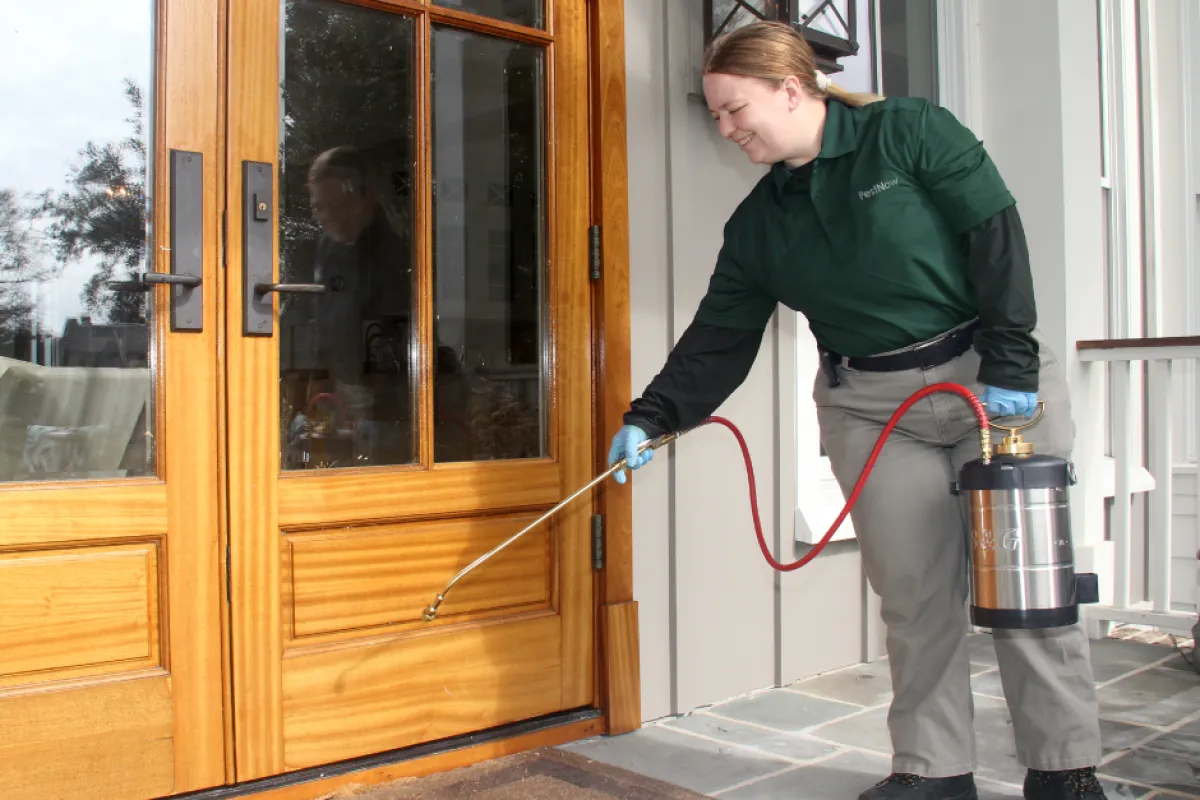Effective A1 Bed Bug Treatment in Charlotte - Safe and Proven Approaches
Effective A1 Bed Bug Treatment in Charlotte - Safe and Proven Approaches
Blog Article
Bed Pest Treatment Malfunction: Comparing Chemical Vs. Non-Chemical Solutions
In the world of pest control, specifically when handling the persistent problem of bed insects, the choice in between chemical and non-chemical therapy options can be a crucial one. Both approaches offer unique advantages and downsides, influencing elements such as effectiveness, safety and security considerations, and total price. By taking a look at the nuanced information of each method, a more clear understanding of which path to seek in addressing a bed insect problem can be obtained.
Effectiveness of Chemical Therapies
Chemical treatments for bed insect problems have been widely acknowledged for their powerful and rapid efficacy in eradicating these pests. When thinking about the performance of chemical treatments, it is vital to recognize that they can provide a fast and comprehensive solution to a bed pest problem.
In addition, chemical therapies have the advantage of offering recurring impacts, indicating that they can proceed to remove bed insects even after the first application. This recurring activity is especially beneficial in combating any type of prospective re-infestations. Furthermore, the fast activity of chemical therapies can bring relief to people facing severe bed pest invasions, allowing them to gain back control of their home promptly.
Safety Interest In Chemical Solutions
One critical aspect that needs mindful factor to consider when using chemical options for bed pest treatment is guaranteeing the security of owners and the setting. Direct exposure to particular chemicals utilized in bed bug treatments can lead to breathing issues, skin inflammation, or other adverse responses, especially in individuals with pre-existing problems or sensitivities.
Additionally, the ecological influence of chemical options is one more significant consideration. Some pesticides made use of in bed bug treatments might be harmful to useful pests, wild animals, and communities if they seep into the dirt or water supply. It is necessary to utilize chemical treatments sensibly, complying with safety and security guidelines, and considering much less toxic options to minimize these risks and ensure the effective and risk-free administration of bed pest problems.
Advantages of Non-Chemical Methods
Considering the potential safety and security worries and environmental impact connected with chemical remedies for bed pest therapy, exploring non-chemical methods provides an appealing alternative with numerous unique benefits. Non-chemical approaches provide a more secure alternative for households, particularly those with animals, people, or kids conscious extreme chemicals. These techniques remove the risks of direct exposure to poisonous compounds, decreasing the capacity for damaging health effects. Additionally, non-chemical treatments are eco-friendly, as they do not add to air or water air pollution, making them a sustainable choice for insect control.
Additionally, non-chemical solutions can be effective in targeting bed insects, consisting of hard-to-reach locations where chemical therapies may not penetrate. Methods such as heat treatment, vacuuming, steam cleansing, and bed mattress coverings offer complete obliteration without making use of unsafe chemicals. Additionally, non-chemical methods can be much less turbulent, needing very little prep work and enabling quicker reentry into treated areas. In general, selecting non-chemical bed insect treatment techniques not just focuses on safety and security and environmental management but also guarantees comprehensive and reliable parasite control.
Limitations of Non-Chemical Treatments

In addition, non-chemical treatments typically require several applications to achieve effective elimination. This can be taxing and may not constantly assure complete removal of all bed cooks pest control pests and their eggs, especially in hidden or hard-to-reach locations.
In addition, the success of non-chemical therapies heavily depends on proper application and thoroughness, which can be challenging for people without expert competence. Inadequate application of non-chemical methods might lead to insufficient removal, resulting in relentless infestations and the demand for additional therapies.
Therefore, while non-chemical treatments have their benefits, it is important to recognize these constraints and consider them when establishing the most effective technique for managing bed bug infestations.
Price Contrast: Chemical Vs. Non-Chemical Options
Given the restrictions related to non-chemical therapies, an important element to examine in the context of bed pest monitoring is the expense contrast in between chemical and non-chemical alternatives. Chemical therapies usually include the application of insecticides by professionals, which can vary from $250 to $900 per room, depending upon the severity of the invasion and the size of the area to be treated. On the other hand, non-chemical therapies like heat therapy or steam can be more costly, with prices varying from $1,000 to $6,000 for a whole home. While the first price of chemical treatments may appear lower, numerous treatments might be required to totally remove the invasion, potentially increasing the total price. On the other hand, non-chemical alternatives might give a more eco-friendly and lasting solution, although they can be cost-prohibitive for some people. Inevitably, when thinking about the expense of bed bug therapy alternatives, it is important to consider the in advance expenditures versus the effectiveness and lasting sustainability of the chosen method.
Verdict

Considering the prospective security worries and environmental impact connected with chemical remedies for bed insect treatment, exploring non-chemical approaches offers an appealing choice with several distinctive benefits.Provided the limitations associated with non-chemical treatments, an important facet to assess in the context of bed bug management is the cost contrast between chemical and non-chemical choices. In contrast, non-chemical therapies like warm treatment or heavy steam can be a lot more expensive, with expenses ranging from $1,000 to $6,000 for an entire home. While the preliminary expense of chemical therapies may appear reduced, several therapies may be needed to fully get rid of the invasion, potentially increasing the general cost.In final thought, when comparing chemical and non-chemical bed bug treatment alternatives, it is crucial to take into consideration efficiency, security, benefits, restrictions, and expense.
Report this page